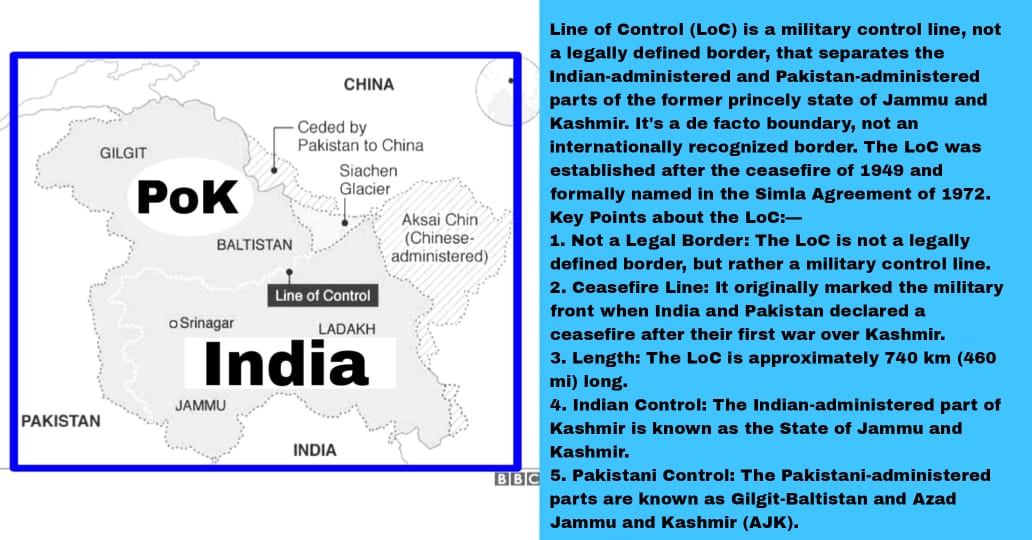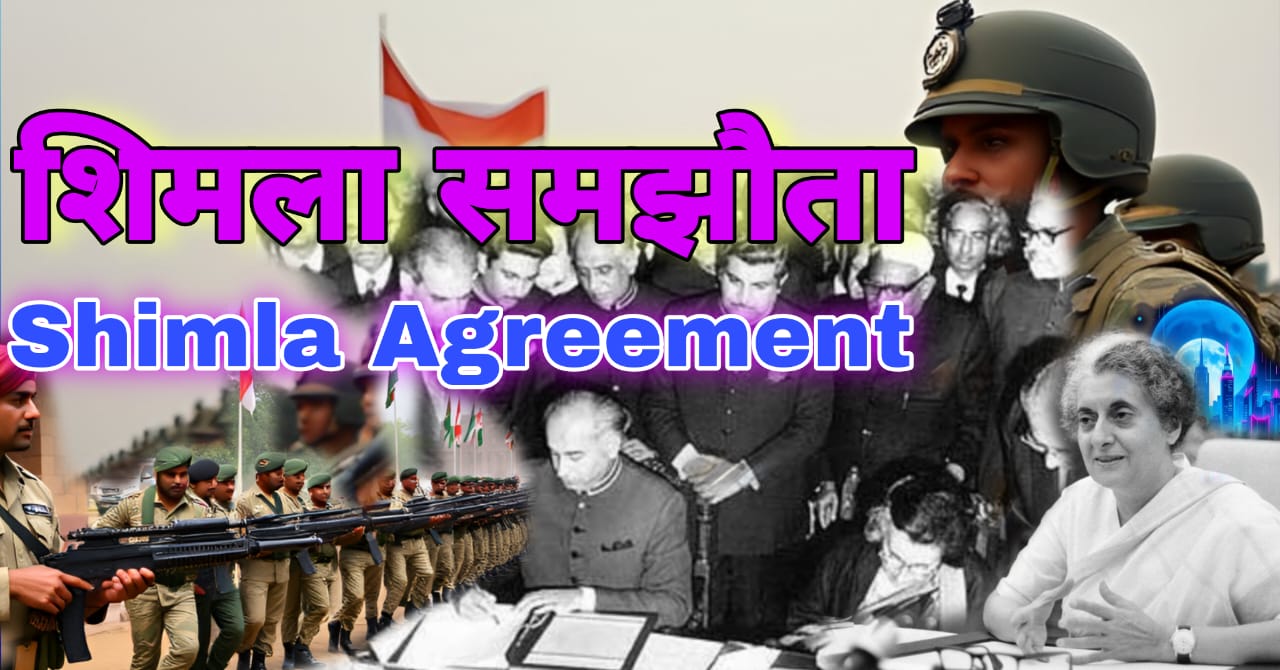Shimla Agreement 1972: A Cornerstone of Indo-Pakistan Bilateral Diplomacy
The Shimla Agreement, signed on 2nd July 1972, between the Prime Minister of India, Indira Gandhi, and the President of Pakistan, Zulfikar Ali Bhutto, stands as one of the most consequential diplomatic outcomes following the Indo-Pak War of 1971. This agreement was not only a peace accord between two nations recently emerged from war but also a definitive framework guiding bilateral relations ever since. It underscored India’s commitment to peaceful resolution of disputes and redefined regional diplomacy in South Asia.
The backdrop to the Shimla Agreement was the Indo-Pak War of 1971, which led to the dismemberment of Pakistan and the creation of Bangladesh. India’s decisive military victory had resulted in the capture of approximately 93,000 Pakistani soldiers. The balance of power in South Asia was heavily tilted in India’s favor, providing it with significant diplomatic leverage.
The war was triggered by the political crisis in East Pakistan (now Bangladesh) following the denial of power to the Awami League, which had won the majority in Pakistan’s national elections. The Pakistan army’s brutal crackdown led to a massive humanitarian crisis, pushing millions of refugees into India. India’s intervention, motivated both by humanitarian concerns and strategic calculations, resulted in the swift liberation of East Pakistan.
Signed in Shimla, the capital of Himachal Pradesh, the Shimla Agreement sought to create conditions for lasting peace and normalcy between India and Pakistan. The signatories were:
- Indira Gandhi, Prime Minister of India
- Zulfikar Ali Bhutto, President (later Prime Minister) of Pakistan
The agreement sought to prevent further hostilities and build a new framework for peaceful bilateral engagement. It was also aimed at resolving the issues arising from the 1971 war, including the return of prisoners of war (PoWs) and normalization of diplomatic relations.
Key Provisions of the Shimla Agreement
The most significant clause emphasized that:
“The two countries shall settle their differences by peaceful means through bilateral negotiations or by any other means mutually agreed upon.”
This effectively ruled out third-party intervention, including from the United Nations—a stance that India has consistently maintained since then, particularly on the Kashmir issue.
The agreement stated that:
“Neither side shall unilaterally alter the situation and shall prevent the organization or encouragement of acts detrimental to the maintenance of peaceful relations.”
This was meant to prevent armed incursions and destabilizing actions such as cross-border terrorism and infiltration.
Both parties pledged:
“To respect each other’s national unity, territorial integrity, political independence and sovereign equality.”
This clause was crucial in ensuring a commitment to non-interference in each other’s internal affairs.
The Line of Control, emerging from the ceasefire on 17 December 1971, was formally recognized:
“Without prejudice to the recognized positions of either side, the Line of Control in Jammu and Kashmir shall be respected and neither side shall seek to alter it unilaterally.”

This clause formalized the LoC as a de facto border, if not de jure, which Pakistan agreed to respect.
The agreement proposed steps for restoring normalcy, such as:
- Resumption of communications (postal, telegraphic, air, and land links)
- Reopening of trade channels
- Promotion of people-to-people travel
- Cooperation in cultural and scientific fields
Both governments committed to:
“Preventing hostile propaganda and encouraging positive information dissemination to improve mutual relations.”
This was aimed at creating a favorable public opinion in both countries to support long-term peace.
The agreement paved the way for the phased return of nearly 93,000 Pakistani PoWs, which India had captured during the 1971 war.
The two countries agreed to:
“Continue efforts for establishing durable peace and normalization of relations, including arrangements for permanent peace.”
This included further meetings between leaders and officials to ensure continuity in dialogue.
Strategic Significance and Diplomatic Impact
The Shimla Agreement institutionalized the principle of bilateralism, which remains the cornerstone of India’s Pakistan policy. It gave India a strong diplomatic foundation to reject internationalization of the Kashmir issue in forums like the United Nations.
The formal acceptance of the LoC by both sides, even though Pakistan retained its position on Kashmir, was a strategic success for India. It provided a legitimate framework to counter any cross-border violations as breaches of an accepted boundary.
India’s decision to release 93,000 PoWs without extracting substantial concessions was seen as magnanimous and a gesture of goodwill. This bolstered India’s international reputation as a responsible regional power focused on peace and stability.
However, there was criticism within India that the agreement did not extract enough from Pakistan despite India’s advantageous position. Analysts argue that India could have used the PoWs as leverage to secure Pakistan’s formal recognition of Bangladesh or exact greater concessions on Kashmir.
The LoC, recognized through this agreement, stretches over 740 km across the states of Jammu, Kashmir, and Ladakh. It separates Indian-administered Jammu & Kashmir from Pakistan-occupied Kashmir (PoK). The LoC is not an international border but remains one of the most sensitive and heavily militarized lines in the world.
- Frequent Cross-Border Shelling
- Terrorist Infiltration
- Military Standoffs
- Surveillance and Border Fencing
Despite its formal recognition, the LoC has been the flashpoint for subsequent conflicts, including the Kargil War in 1999.
Impact on India’s Foreign Policy Doctrine
The Shimla Agreement reaffirmed India’s broader foreign policy vision rooted in the Panchsheel Principles—particularly non-interference and peaceful resolution.
Panchsheel Agreement:—
The Panchsheel Samjhauta (Panchsheel Agreement) refers to the Five Principles of Peaceful Coexistence, which were formally adopted by India and China in 1954. These principles serve as a framework for peaceful and cooperative relations between nations, particularly in the context of decolonization and the Cold War.
The Five Principles are:
- Mutual respect for each other’s territorial integrity and sovereignty:— This means respecting the boundaries and independence of other nations.
- Mutual non-aggression:— This principle prohibits the use of force or the threat of force against other nations.
- Mutual non-interference in each other’s internal affairs:— This means respecting the internal policies and governance of other countries and refraining from interfering in their domestic issues.
- Equality and mutual benefit:— This principle promotes fair and reciprocal relations between nations, ensuring that all parties benefit from their interactions.
- Peaceful co-existence:— This emphasizes the importance of resolving disputes peacefully and avoiding conflict.
The Panchsheel Agreement was significant because it provided a framework for nations to build peaceful relationships, especially in a world marked by the Cold War and the ongoing process of decolonization. It was seen as a way for newly independent nations to establish a more principled approach to international relations, moving beyond the power dynamics of colonialism.
India maintained its commitment to strategic autonomy, resisting external pressure from global powers to allow third-party mediation, especially on Kashmir.
Post-Shimla, India has consistently emphasized bilateral forums for resolving regional disputes, whether in South Asia, with China, or others.
Initially Pakistan was not ready to recognize Bangladesh, but later due to international pressure and India’s diplomacy after the Shimla Agreement, Pakistan gradually had to accept the reality of Bangladesh and recognize it.
Some experts believe that Indira Gandhi’s government did not fully capitalize on India’s victory diplomatically; such as:—
(i) The opportunity to take back Pakistan-occupied Kashmir (POK) or to exert pressure related to it was lost.
(ii) The opportunity to get some concrete benefit from Pakistan in exchange for the release of about 93 thousand Pakistani prisoners of war (PoW) was lost.
Shimla Agreement and India’s Stand on Kashmir
The agreement provided India with strong legal and diplomatic backing to reject any UN or third-party intervention in Kashmir. India argues that since Pakistan signed the agreement committing to bilateral resolution, international mediation has no locus standi.
- Others believe it allowed Pakistan to regroup diplomatically and militarily for future provocations.
India’s Broader Foreign Policy Principles Post-1972
India, under Nehru and successors, championed the Non-Aligned Movement (NAM), avoiding alignment with either the US or USSR blocs during the Cold War. This allowed India to pursue an independent foreign policy.
After the Kargil conflict, India adopted a more strategic realist approach. The Shimla Agreement was invoked again to highlight Pakistan’s violation of bilateral commitments.
In the 21st century, India’s foreign policy has diversified beyond the Subcontinent:
- Act East Policy: To engage ASEAN and East Asian nations.
- Neighbourhood First: To improve relations with immediate neighbors.
- Indo-Pacific Engagement: Countering Chinese influence and ensuring maritime security.
Recent Relevance: Renewed Challenges to the Shimla Agreement
India cited the Shimla Agreement to reinforce that all issues, including terrorism and Kashmir, must be resolved bilaterally. However, Pakistan’s internationalization efforts persisted.
India reiterated that changes within its territory are sovereign decisions. Pakistan responded by downgrading diplomatic ties and again raised the issue in international forums, which India countered by citing the Shimla Agreement.
Recent attacks, including the Pahalgam incident, have reignited debates on whether the Shimla framework is sufficient in addressing Pakistan’s state-sponsored terrorism.
India’s Diplomatic Responses and Future Trajectory
India has moved toward strategic partnerships with major powers like the US, France, Russia, Japan, and Australia, balancing its regional strategy with global outreach.
There is a growing sentiment that India must reevaluate bilateral commitments when consistently violated. Some scholars argue for a recalibrated diplomacy with Pakistan.
India’s evolving national security doctrine integrates military readiness, economic resilience, and technological innovation to deal with hybrid threats and asymmetric warfare.
Conclusion
The Shimla Agreement remains a landmark in South Asian diplomatic history. While it was a product of India’s military and diplomatic supremacy post-1971, it also reflected a mature, peaceful, and long-term approach to conflict resolution. Its core tenets—bilateralism, peaceful resolution, and respect for sovereignty—continue to guide India’s Pakistan policy.
However, evolving geopolitical realities, repeated cross-border hostilities, and Pakistan’s failure to curb terrorism have tested the agreement’s efficacy. While the document still holds legal and moral weight, India’s foreign policy must be dynamic enough to adapt to the challenges of the 21st century while preserving the core values the Shimla Agreement sought to enshrine.

